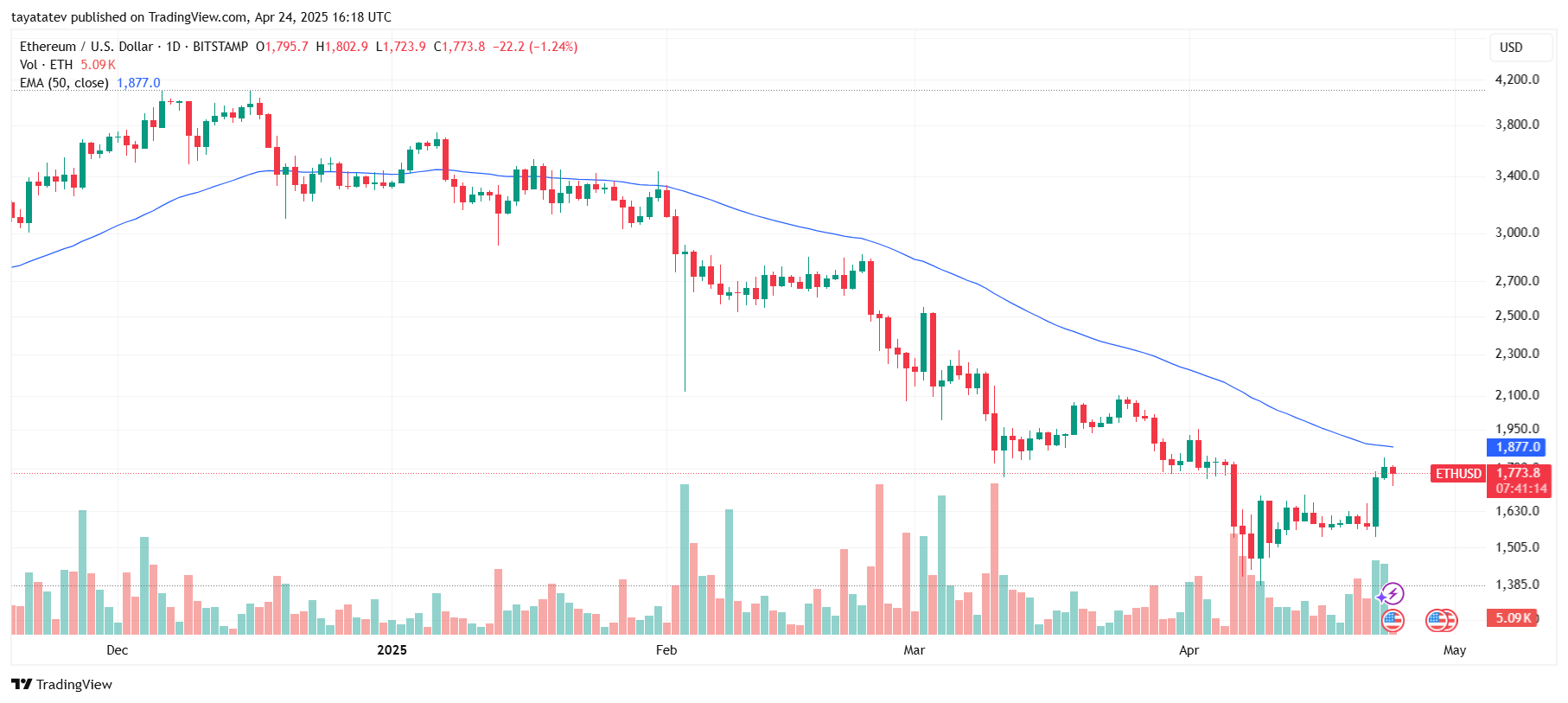Charles Hoskinson, founder of Cardano and co-founder of Ethereum, raised concerns about Ethereum’s future during an April 23 AMA session.
He stated that Ethereum might not survive the next 10 to 15 years, despite its current dominance in total value locked (TVL).
Ethereum holds the highest TVL among all blockchain networks. Hoskinson pointed to structural flaws in Ethereum’s design.
He said,
“They have the wrong accounting model, they have the wrong virtual machine, and they have the wrong consensus model.”
According to him, these foundational issues limit Ethereum’s ability to scale.
He added that fixing these problems could cause internal disruption. Hoskinson believes Ethereum’s governance and token model would lead to a “very hostile divorce” if major changes were attempted.

Layer 2s Are Hurting Ethereum, Not Helping
Hoskinson criticized Ethereum’s growing reliance on Layer 2 (L2) networks. He referred to them as “parasitic,” stating they extract value from the mainnet instead of solving Ethereum’s core issues. He said,
“The layer 2s will continue to suckle out all of the alpha.”
Ethereum’s L2s, including Arbitrum and Optimism, handle large transaction volumes.
However, Hoskinson argued they do not resolve the base chain’s congestion or high fees. Instead, they shift usage away from Ethereum, which reduces its direct economic activity.
He compared Ethereum’s position to past tech leaders like Myspace and Blackberry.
According to Hoskinson, Ethereum could follow a similar path due to mismanagement and rising internal conflicts. He also warned that Vitalik Buterin’s influence may no longer be enough to hold the project together.
Ethereum Faces Performance and Adoption Issues in 2025
Ethereum’s performance in 2025 has shown signs of struggle. The token has had one of its worst yearly starts. ETH dropped below key support levels earlier this year.
Although it briefly recovered to $1,815, it has since pulled back to $1,743. That still marks a 9.3% gain over the last seven days, compared to the broader market’s 8.10% rise.

Ethereum’s economic model is weakening. L2s divert activity from the mainnet, which affects Ethereum’s gas revenue and user base. High fees and slow speeds have continued to frustrate developers and users alike.
Institutional investors also show more interest in Bitcoin than in Ethereum. This trend has added pressure on ETH’s market position.
Ethereum Pectra and Fusaka Upgrades Coming in 2025
Ethereum developers plan to release two upgrades in 2025—Pectra and Fusaka. These updates are expected to improve network scalability and transaction efficiency.
Binance Research stated the changes aim to reduce congestion and improve usability for high-volume applications.
The Ethereum upgrades focus on making the base layer more efficient. Developers expect faster processing and lower gas costs after implementation. However, Ethereum has not yet confirmed specific release dates for either upgrade.
These upgrades are part of ongoing efforts to address Ethereum’s long-term technical issues.
While L2 networks continue to grow, Ethereum’s core developers are trying to make the base layer more viable for mainstream use.
Disclosure:This article does not contain investment advice or recommendations. Every investment and trading move involves risk, and readers should conduct their own research when making a decision.
Kriptoworld.com accepts no liability for any errors in the articles or for any financial loss resulting from incorrect information.


